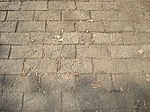Ellsworth Avenue
Ellsworth Avenue is located in the Shadyside neighborhood of Pittsburgh, Pennsylvania. It is mostly a commercial street that has locally owned businesses, galleries, restaurants, and bars. It runs southwest-northeast, parallel to Walnut Street, another commercial street, and is bounded by Shady Avenue to the east and South Neville Street to the west. Ellsworth Avenue is one of Shadyside's three business districts, along with South Highland Avenue and Walnut Street.Several Pittsburgh Historic Landmarks line Ellsworth Avenue. At the corner of Neville and Ellsworth is the Church of the Ascension, an episcopalian church that was named a landmark in 1971. Colonial Place is a mansion designed by George S. Orth that became a landmark in 1898. Roslyn Place (a wood-paved street) and Ellsworth Terrace are also landmarks located here.
Excerpt from the Wikipedia article Ellsworth Avenue (License: CC BY-SA 3.0, Authors).Ellsworth Avenue
Ellsworth Avenue, Pittsburgh
Geographical coordinates (GPS) Address Nearby Places Show on map
Geographical coordinates (GPS)
| Latitude | Longitude |
|---|---|
| N 40.453458 ° | E -79.935184 ° |
Address
Ellsworth Avenue 5438,5440
15232 Pittsburgh
Pennsylvania, United States
Open on Google Maps











